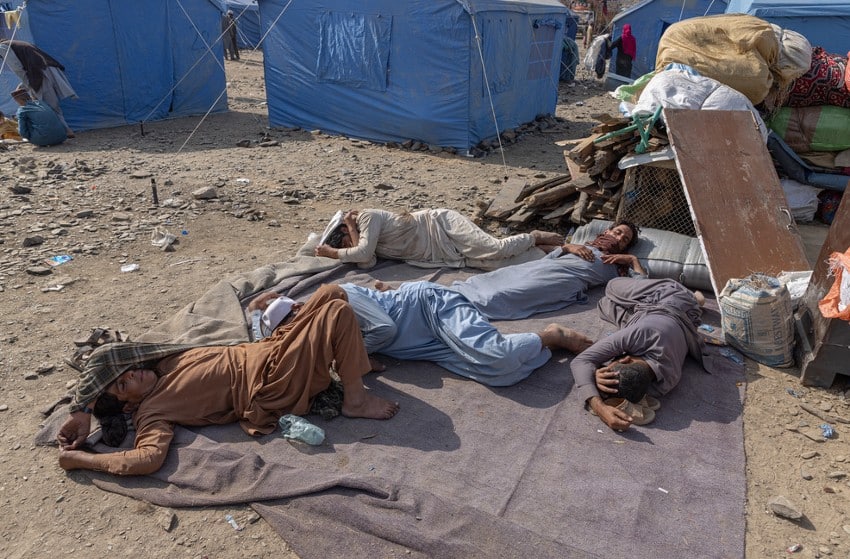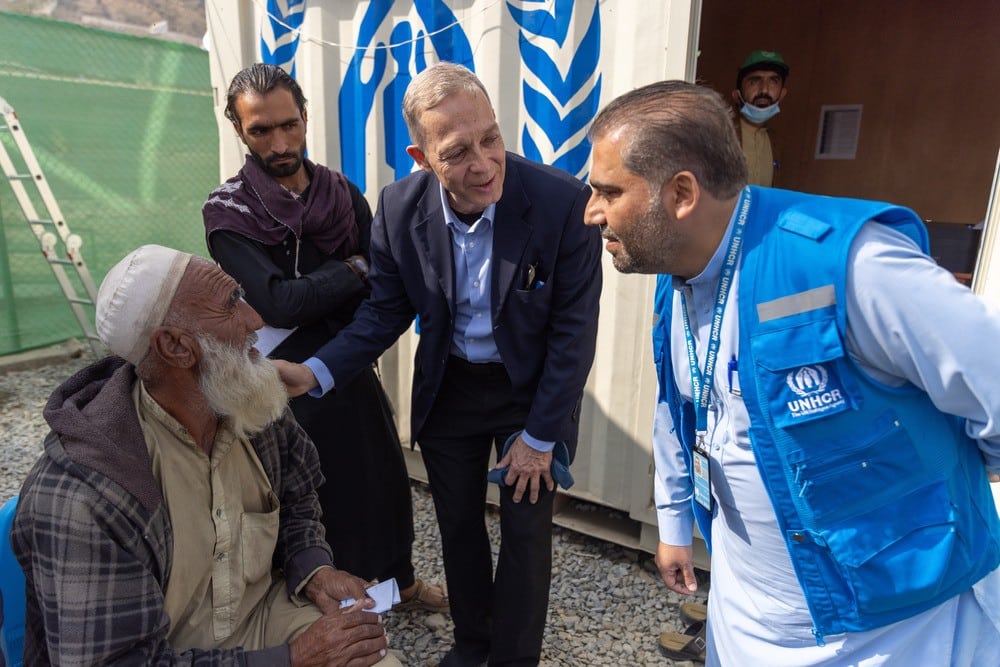What is the Crisis About?
Afghanistan is still reeling from decades of conflict, disasters such as the recent devastating earthquakes in the western part of the country, and a crippling economic crisis.
29 million Afghans inside the country are currently in need of humanitarian assistance according to UN estimates, with 17.2 million people, 40 per cent of the population, struggling to meet their basic food needs (OCHA).
Afghanistan is facing an unprecedented humanitarian crisis with a serious risk of systemic collapse and human catastrophe. In addition to unimaginable human costs, this crisis is reversing many of the gains of the last 20 years, including around women’s rights.

Background on the situation
The end of the 20-year armed conflict between the Taliban and the Afghan National Security and Defence Forces in August 2021, and the simultaneous takeover of the country by the Taliban have ushered in a new era characterized by rapid economic decline, hunger and risk of malnutrition, inflation driven by global commodity shocks, drastic rises in urban and rural poverty, a near-collapse of the national public health system, a stifling of the media and civil-society sectors, and almost total exclusion of half the population – women and girls – from public life.
Impact on People and the Environment
- 15.8 million out of a population of 41.7 million have acute food insecurity.
- 1 in 3 Afghans do not know where their next meal will come from.
In addition to the Taliban takeover and the post-conflict situation, three 6.3 magnitude earthquakes in the space of just eight days in October in the western province of Herat damaged 40,000 homes – 10,000 of which were completely destroyed – which affected 275,000 people. Thousands of families are now living in tents and makeshift shelters, where they are exposed to rapidly falling winter temperatures.

Since Pakistan announced the repatriation of “illegal foreigners” on 1 November 2023, more than 450,000 Afghans have returned, more than 85 per cent of whom are women and children. They require both immediate attention and assistance at the border and longer-term support for reintegration.
UN Response to the Crisis
Between January and October this year, the UN and its NGO partners have provided direct life-saving assistance to 26.5 million people, including 14.2 million women and girls.
Aid operations in the country face a critical funding gap. The total requirements for funding are estimated at $3.1 billion in 2024. In 2023, the $3.2 billion appeal for funding is just 41.9 per cent funded.
UN Agencies Involved and Their Role
UN has a mission in Afghanistan, UNAMA or the UN Assistance Mission in Afghanistan. Its aim is to support the people and institutions of Afghanistan in achieving peace and stability.
Several UN agencies have a focus on Afghanistan, not least those involved in humanitarian affairs, such as the UN Office of Coordination of Humanitarian Affairs (OCHA). UNHCR and IOM are heavily involved with the 2.6 million registered Afghan refugees in the world, of whom 2.2 million are registered in Iran and Pakistan alone. Another 3.5 million people are internally displaced. UN Women has been active in Afghanistan for many years. Among other UN entities within the UN Country Team in Afghanistan, it is worth mentioning UNDP, WHO, UNODC, UNFPA, WFP, UNICEF, UNMAS, and the World Bank.

SDGs Connected to the Crisis
Many of the 17 Sustainable Development Goals (SDGs) are at stake in Afghanistan, notably #1 (No poverty), #2 (Zero hunger), #5 (Gender equality) #8 (Decent work and economic growth) and #16 (Peace, justice and strong institutions).
How Can You Get Involved?
- Donate to the World Food Programme (WFP)
- Donate to Afghan refugees (UNHCR)
- Donate to help women in Afghanistan (UN Women)
- Donate to UNICEF
- Donate to OCHA
